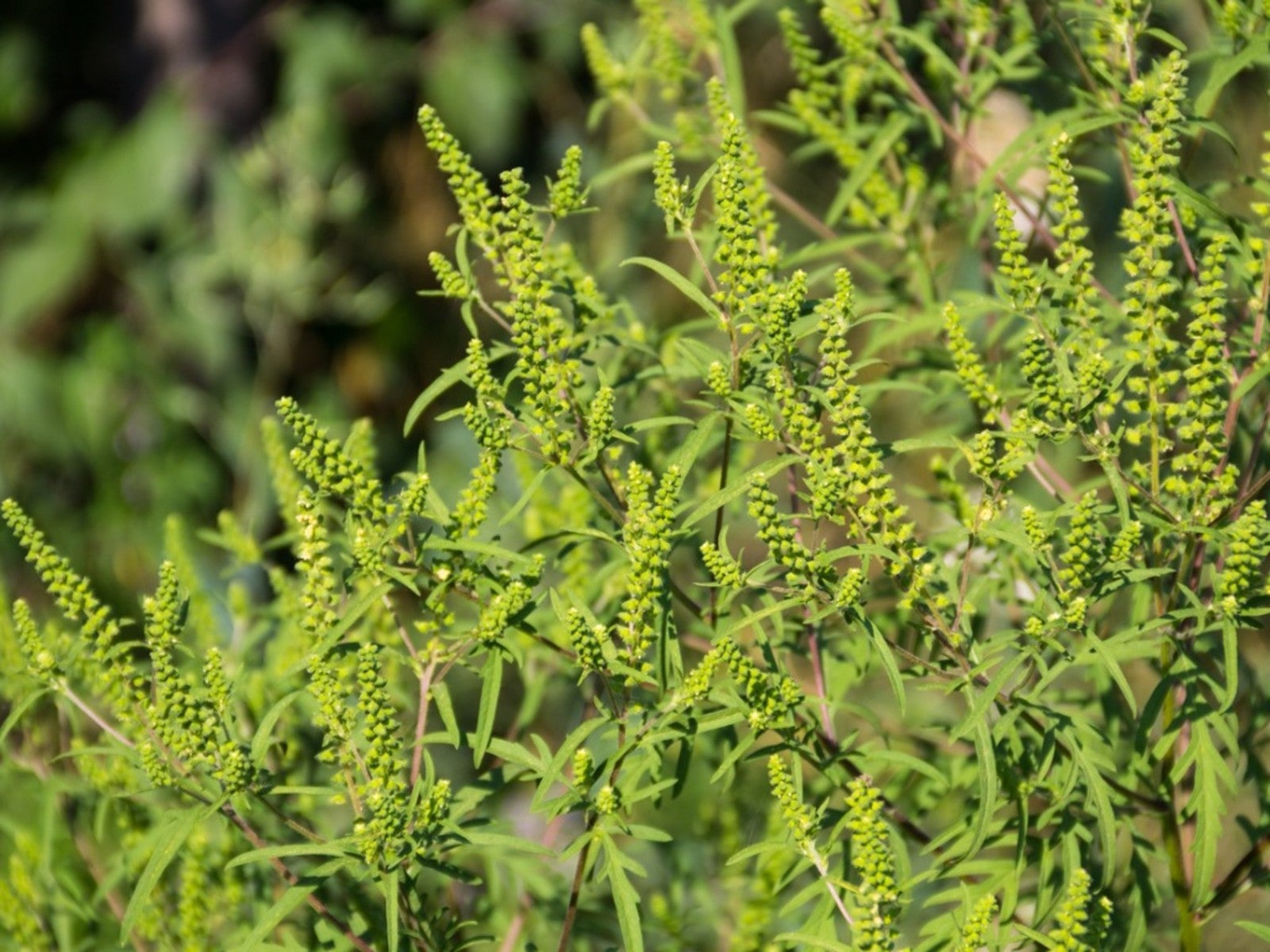Tips For Controlling Ragweed Plants


For an allergy sufferer, having your lawn or garden invaded by ragweed can be near torture. The ragweed plant (Ambrosia artemisiifolia) is a common weed in yards and is one of the worst for pollen production. Controlling ragweed will not only help to keep your garden looking nice, it will also help alleviate the allergy symptoms for people in and around your garden.
What Does Ragweed Look Like?
Ragweed identification is easy due to the distinct leaves and flowers on the plant. Ragweed is an upright growing plant that has leaves that look almost fern-like, feathery and green. You will also notice that ragweed leaves look hairy. The flowers on the plant are also useful for ragweed identification. The flowers on ragweed are yellow and long, like streamers. There will normally be several clustered flowers at the top of the plant, which look like a fountain, and also several flowers closer to the bottom. The flowers at the top are the male flowers (which produce the pollen) and the flowers closer to the bottom are the female flowers.
How to Control Ragweed
Ragweed plants like to grow in heavy, untilled soil and are frequently found in soil that is uncrowded and has poor fertility. They also do not tolerate being mowed very well. Due to this, one of the best ways to control ragweed in your lawn and flower beds is to make sure that lawns are mowed regularly and open beds are cultivated or hoed on a regular basis. Also, improving soil by adding compost and other organic materials will not only keep the soil from getting heavy, but will also add nutrients to keep the soil healthy. Both of these benefits will help to keep ragweed from establishing in your garden. If ragweed plants have already started growing in your yard, you have several methods for getting rid of them. Herbicides are a common way how to kill ragweed. Ragweed is considered a broadleaf weed, so you can use broadleaf weed killers on it to help get rid of it. In recent years, however, some varieties of ragweed have started to build up a resistance to these common weed killers, so using herbicides may not be 100% effective. If you decide to use herbicides to kill ragweed, the best time to apply them is mid spring to early summer. Controlling ragweed at this time will assure that you are applying the herbicide when the leaves of the plant are still rather immature and tender and, therefore, more susceptible to herbicides. Hand pulling can be used as an organic way to control ragweed. In a home garden setting, this is the easiest way for controlling ragweed, as the plants are easy to pull and easy to spot. Make sure to pull these weeds out of your garden before they flower. A ragweed plant can produce more than 60,000 seeds if allowed to fully mature. Note: Chemical control should only be used as a last resort, as organic approaches are safer and much more environmentally friendly.
Gardening tips, videos, info and more delivered right to your inbox!
Sign up for the Gardening Know How newsletter today and receive a free copy of our e-book "How to Grow Delicious Tomatoes".

Heather Rhoades founded Gardening Know How in 2007. She holds degrees from Cleveland State University and Northern Kentucky University. She is an avid gardener with a passion for community, and is a recipient of the Master Gardeners of Ohio Lifetime Achievement Award.
-
 Try The Trend – Turn Any Bed Into A Keyhole Garden With This Clever In-Ground Composter
Try The Trend – Turn Any Bed Into A Keyhole Garden With This Clever In-Ground ComposterKeyhole gardening is an efficient and sustainable practice that saves space. Get started on this DIY project quickly and easily with an in-ground composter.
By Bonnie L. Grant
-
 4 Superfast Composting Methods: Turn Waste Into Garden Gold In 30 Days Or Less
4 Superfast Composting Methods: Turn Waste Into Garden Gold In 30 Days Or LessTry the fastest composting methods to turbocharge your pile and transform kitchen scraps and garden waste into finished compost in just a few weeks.
By Mary Ellen Ellis